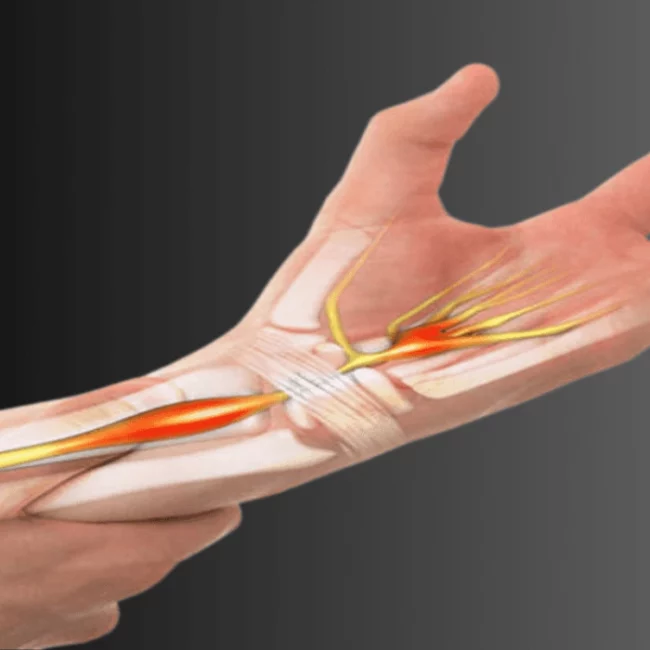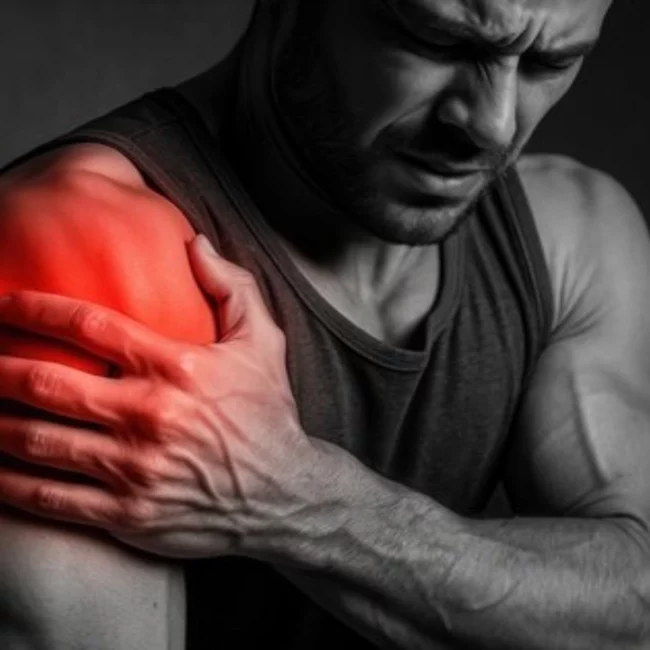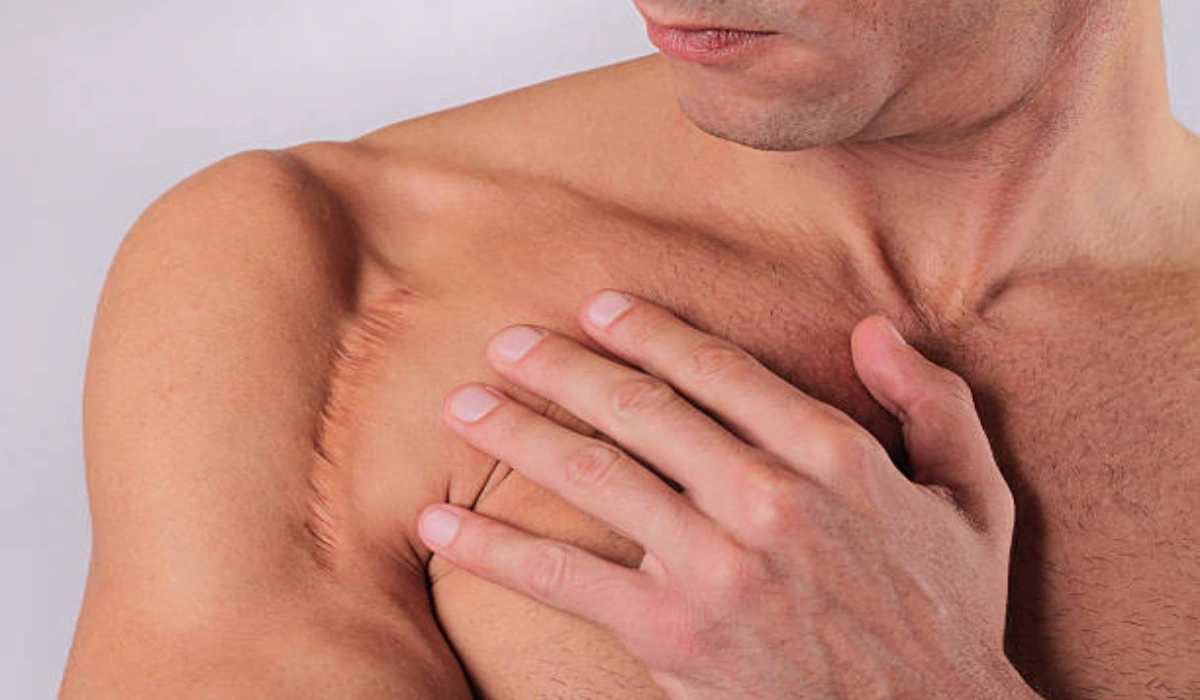
Rehabilitation Strategies After Shoulder Reconstruction Surgery
Shoulder reconstruction surgery is a critical intervention aimed at restoring the structural integrity of the shoulder joint following injury or chronic instability. However, while the surgical procedure corrects mechanical issues, successful recovery is determined largely by the effectiveness of the subsequent rehabilitation after shoulder reconstruction.
This article provides a thorough, evidence-based approach to post-surgery shoulder rehabilitation. It outlines the phased recovery process, introduces key shoulder rehab exercises, addresses common challenges, and provides professional insights to ensure patients maximise their outcomes.
Why Is Rehabilitation Essential After Shoulder Reconstruction?
Post-operative rehabilitation is designed to transition patients from a surgically repaired but immobilised joint to a fully functional shoulder capable of handling the stresses of daily activities, work tasks, and athletic pursuits.
Without a structured rehabilitation plan, patients risk:
- Developing frozen shoulder (adhesive capsulitis)
- Suffering from chronic pain or stiffness
- Experiencing muscle weakness and joint instability
- Prolonging recovery and limiting long-term outcomes
- Facing a higher chance of re-injury or surgical failure
In short, rehabilitation after shoulder reconstruction is as vital as the surgery itself. It allows the repaired structures to heal properly while restoring joint mechanics, proprioception, and strength.
Understanding the Shoulder Joint
The shoulder is one of the most complex and mobile joints in the human body. It is a ball-and-socket joint consisting of the humeral head (ball) fitting into the glenoid cavity (socket) of the scapula. The surrounding structures—ligaments, tendons, labrum, and rotator cuff muscles—work together to provide stability and control.
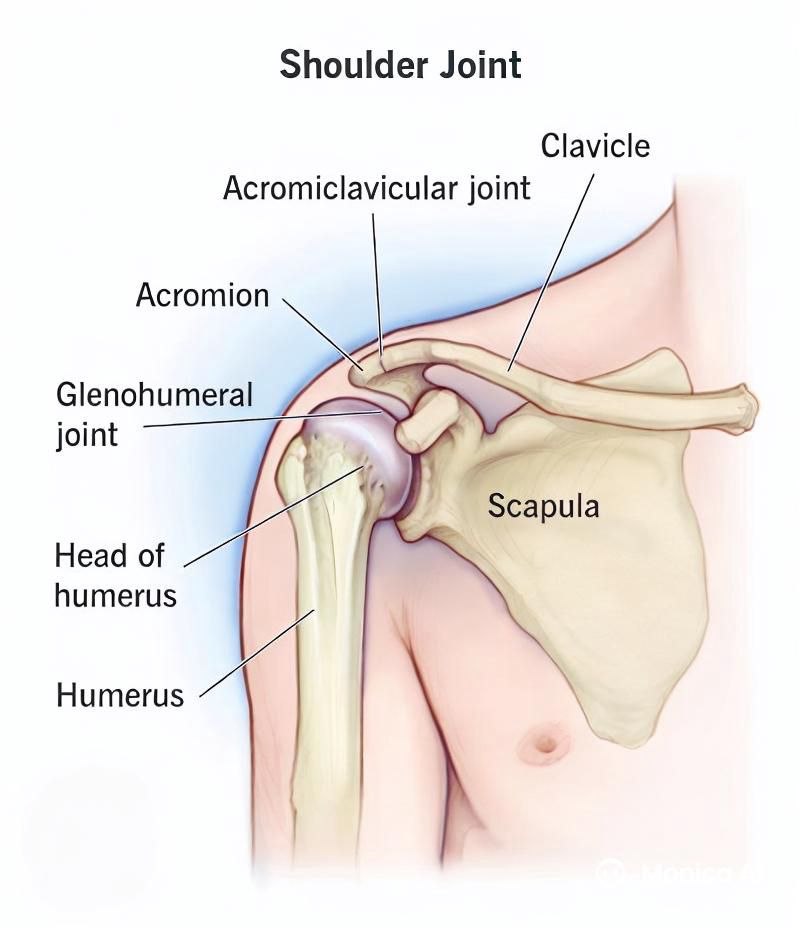
Injury, overuse, or degeneration can compromise these structures, leading to conditions such as:
- Recurrent dislocations
- Rotator cuff tears
- Labral tears
- Glenohumeral instability
Reconstruction surgery is often performed to repair these tissues, but the subsequent rehabilitation phase restores neuromuscular control and prevents the shoulder from becoming dysfunctional again.
The Phases of Post-Surgery Shoulder Rehabilitation
Phase 1: Immediate Post-Surgical Phase (0-4 weeks)
Objectives:
- Protect the surgical repair
- Minimise pain and inflammation
- Prevent joint stiffness in surrounding areas
Key Strategies:
- Use of a sling to immobilise the shoulder
- Ice application several times daily
- Passive range of motion (PROM) performed by a physiotherapist
- Hand, wrist, and elbow mobility exercises to prevent secondary stiffness
Notes:
During this phase, patients are advised to strictly adhere to sling use guidelines and avoid active use of the shoulder muscles to protect the surgical site.
Phase 2: Early Rehabilitation Phase (4-8 weeks)
Objectives:
- Initiate controlled shoulder mobility
- Continue protecting the repair while regaining flexibility
- Reduce swelling and muscle guarding
Key Exercises:
- Pendulum exercises for joint lubrication
- Active-assisted exercises such as pulleys and cane-assisted forward flexion
- Gentle external rotations within a limited range
- Postural re-education to prevent compensatory movements
Clinical Insight:
Restoring movement too aggressively can jeopardise the surgical repair. At Dr. Marouane’s clinic, protocols are tailored to the surgical technique used and patient-specific risk factors.
Phase 3: Intermediate Strengthening Phase (8-12 weeks)
Objectives:
- Improve active range of motion (AROM)
- Introduce light resistance exercises for rotator cuff and scapular muscles
- Build neuromuscular control and endurance
Common Exercises:
- Resistance band external/internal rotations
- Isometric shoulder stabilisation drills
- Scapular stabilisation exercises (rows, scapular retractions)
- Wall push-ups to begin closed-chain loading
Phase 4: Advanced Strengthening and Functional Training (12-20 weeks)
Objectives:
- Regain full range of motion and functional strength
- Transition to dynamic, load-bearing activities
- Prepare for sport-specific or job-specific tasks
Advanced Techniques:
- Dumbbell overhead presses (as tolerated)
- TheraBand drills in multiple planes of movement
- Kettlebell carries to improve shoulder girdle stability
- Proprioceptive and balance drills using therapy balls or unstable surfaces
Note:
Exercises become progressively more complex, simulating real-world scenarios that require strength, control, and joint stability.
Phase 5: Return to Activity and Maintenance (5-6 months onwards)
Objectives:
- Resume sports, work, and high-demand activities safely
- Maintain shoulder health long-term
- Address any residual movement deficits or strength imbalances
Final Phase Exercises:
- Overhead plyometric drills for throwing athletes
- Push-ups and pull-ups for upper body strength (if applicable)
- Sport-specific drills (e.g., tennis swings, swimming patterns)
- Ongoing rotator cuff and scapular stabilisation work
Challenges Patients May Face During Shoulder Rehabilitation
1. Fear of Movement
Many patients develop a fear of re-injury, leading to guarded movements or avoidance of exercises. Professional guidance helps patients distinguish between normal post-surgical discomfort and problematic pain.
2. Shoulder Stiffness
A common complication is adhesive capsulitis (frozen shoulder). Early passive mobilisation and supervised stretching reduce the risk.
3. Muscle Atrophy
Immobilisation leads to loss of muscle mass, especially in the rotator cuff and scapular stabilisers. A graduated strengthening programme mitigates this.
4. Poor Compliance
Skipping exercises or physiotherapy appointments delays recovery. Education and professional accountability are key motivators for adherence.
Nutritional Considerations for Recovery
Proper nutrition supports soft tissue repair, reduces inflammation, and strengthens immune function during rehabilitation. Recommendations include:
- Protein-rich foods to aid muscle repair (e.g., lean meats, legumes)
- Omega-3 fatty acids for anti-inflammatory effects (e.g., fatty fish, flaxseeds)
- Vitamins C and E for collagen synthesis and antioxidant protection
- Hydration to maintain joint lubrication and support cellular repair
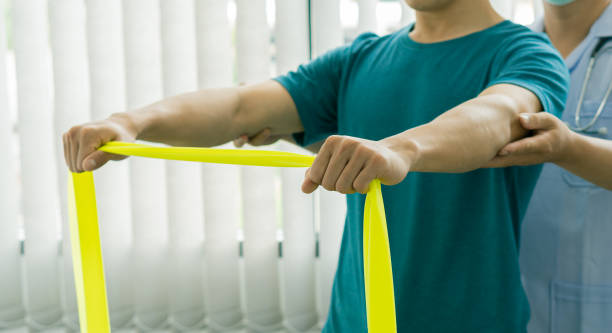
Shoulder Rehab Exercises (Expanded)
1. Sleeper Stretch
Improves posterior capsule flexibility.
2. Serratus Punches
Targets the serratus anterior to enhance scapular mechanics.
3. Prone T Raises
Strengthens mid and lower trapezius for postural support.
4. Dynamic Hug
Engages the serratus anterior and pectoral muscles.
5. Rhythmic Stabilisation with Exercise Ball
Improves shoulder proprioception and neuromuscular control.
6. Side-Lying External Rotation
Focuses on rotator cuff strength in a controlled position.
Best Practices for Long-Term Success
- Continue maintenance exercises beyond formal rehabilitation
- Avoid sudden increases in workload or activity intensity
- Prioritise scapular and rotator cuff conditioning for long-term joint health
- Periodically reassess with a physiotherapist or orthopaedic specialist
Expected Outcomes of Rehabilitation After Shoulder Reconstruction
With adherence to a professional rehabilitation programme, patients can expect:
- A pain-free, functional shoulder joint
- Return to normal daily activities within 4-6 months
- Resumption of sports or labour-intensive work within 6-9 months (depending on case complexity)
- Decreased risk of future shoulder injuries
Red Flags That Require Medical Attention
Patients should seek immediate medical advice if they experience:
- Increasing or persistent swelling beyond expectations
- Severe or sharp pain during rehabilitation exercises
- A feeling of shoulder instability or “popping”
- Signs of infection such as redness, warmth, fever, or discharge from the surgical site
Bringing It All Together
Rehabilitation after shoulder reconstruction is a comprehensive and essential process that supports optimal surgical outcomes. A stepwise, carefully monitored programme helps restore mobility, strength, and confidence while safeguarding the repaired structures.
At Dr. Marouane’s Dubai-based clinic, patients receive bespoke rehabilitation protocols tailored to their surgical procedure, functional demands, and recovery goals. From early protection to advanced functional training, each phase is guided by orthopaedic expertise to ensure long-term success.
Schedule Your Consultation
For expert-led shoulder rehabilitation programmes, patients are encouraged to consult Dr. Marouane, a leading orthopaedic specialist in Dubai, focusing on shoulder and upper limb surgery.



